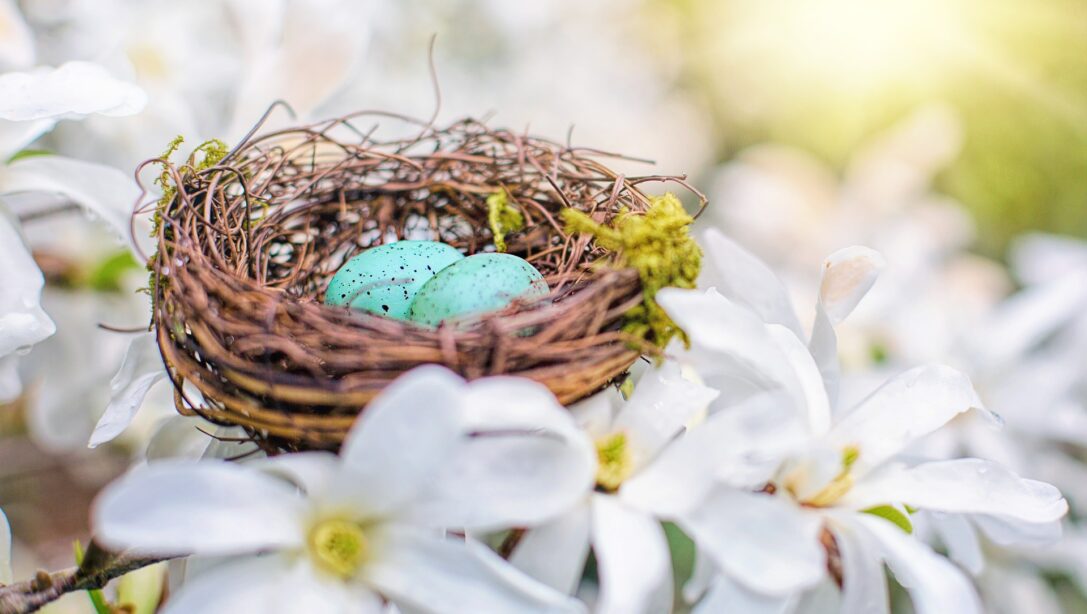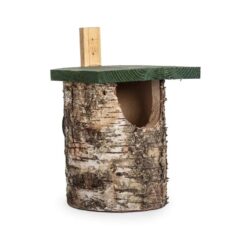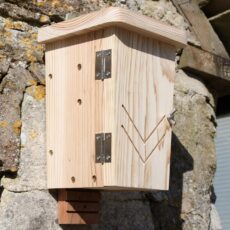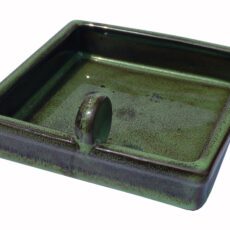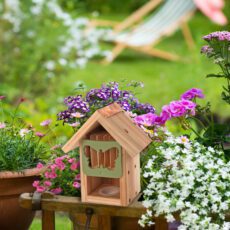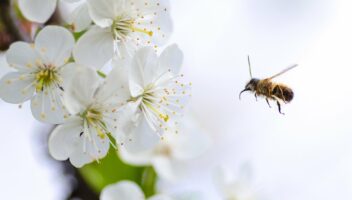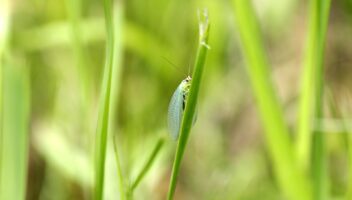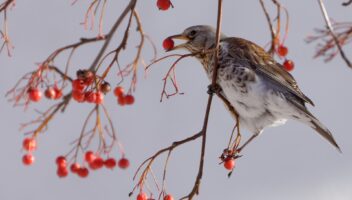Our guide to garden wildlife in May has been created in collaboration with the experts at Wildlife World. Find out what different animal species are doing this month and how you can help them in your garden.
The last month of spring can bring beautiful sunshine days in the garden. This welcome warmth helps the many creatures in our gardens to thrive.
Badgers
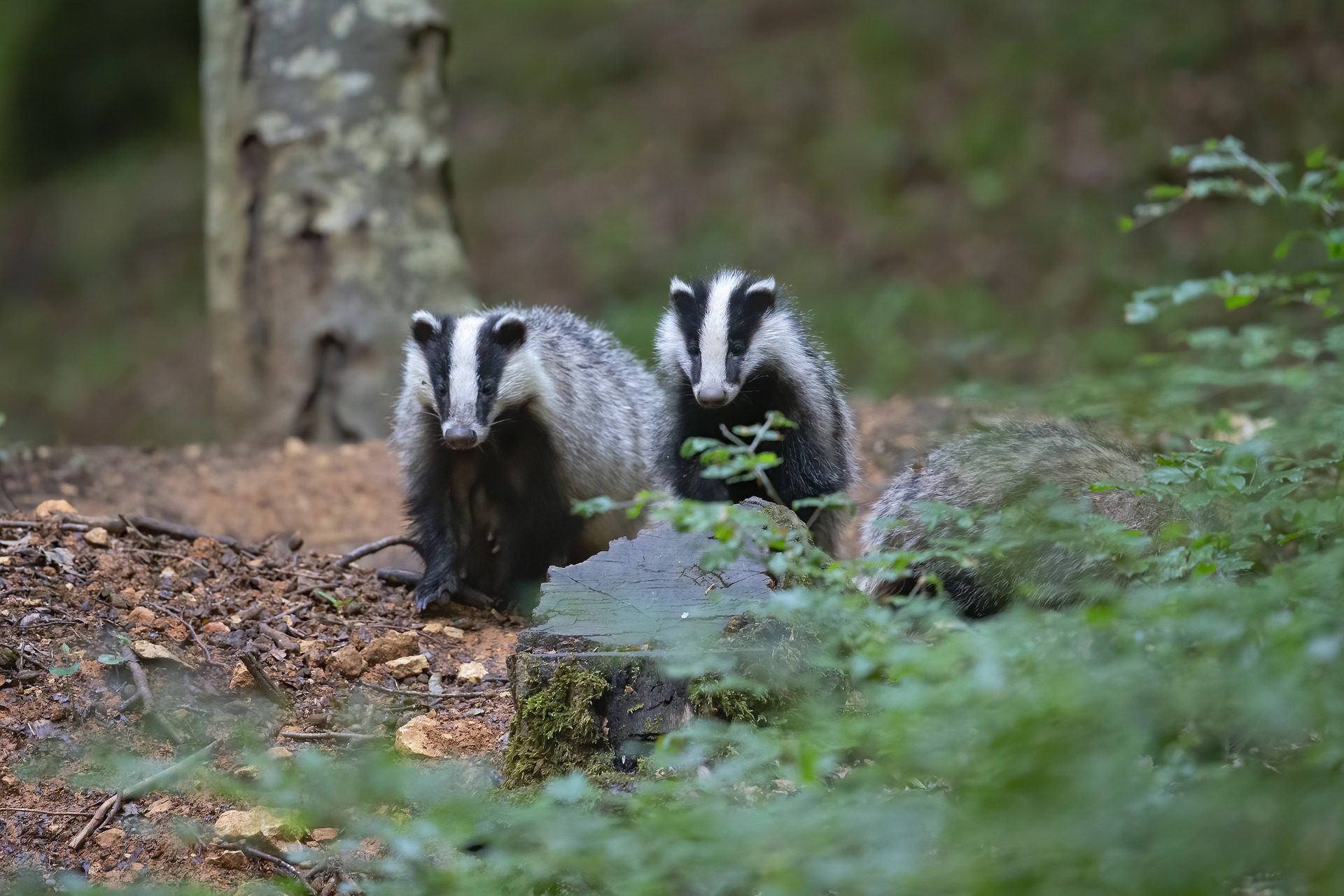
Badger cubs will continue to emerge from their setts this month. You may be fortunate enough to see them searching for food after dark.
How you can help:
- Don’t forget that badgers and their setts are legally protected under the \Protection of Badgers Act 1992. It is a prosecutable offence to wilfully kill or injure a badger, or cruelly mistreat them, including harming their sett.
Bats
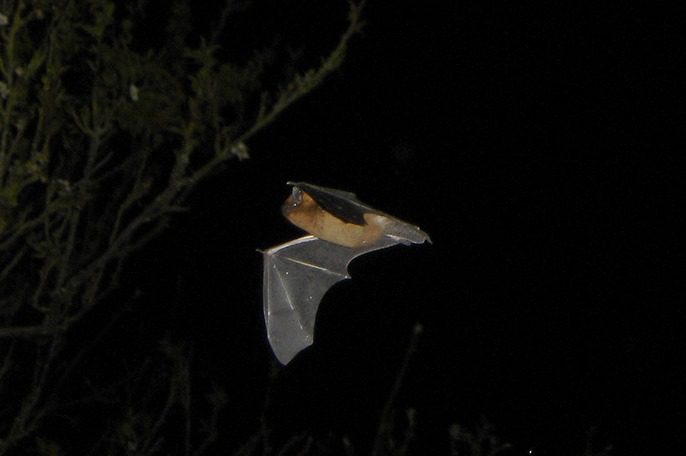
In May, bats will spend warmer evenings flying around, looking for a supply of insects. Female bats will look for a location to form a nursing colony together, with bat pups typically born in June.
How you can help:
- Bats eat insects, so anything you can do to bolster your insect populations will, in turn, support bats. Grow insect-attracting flowers, encourage natural predators instead of using pesticides, and have rough areas of logs and leaves that make insect habitats.
- Evening light pollution is an issue for bat populations as they like to roost and hunt in areas of low lighting. Keeping outdoor lighting to a necessary minimum at night-time will help.
Read more: Encourage and Support Bats in Your Garden
Bees
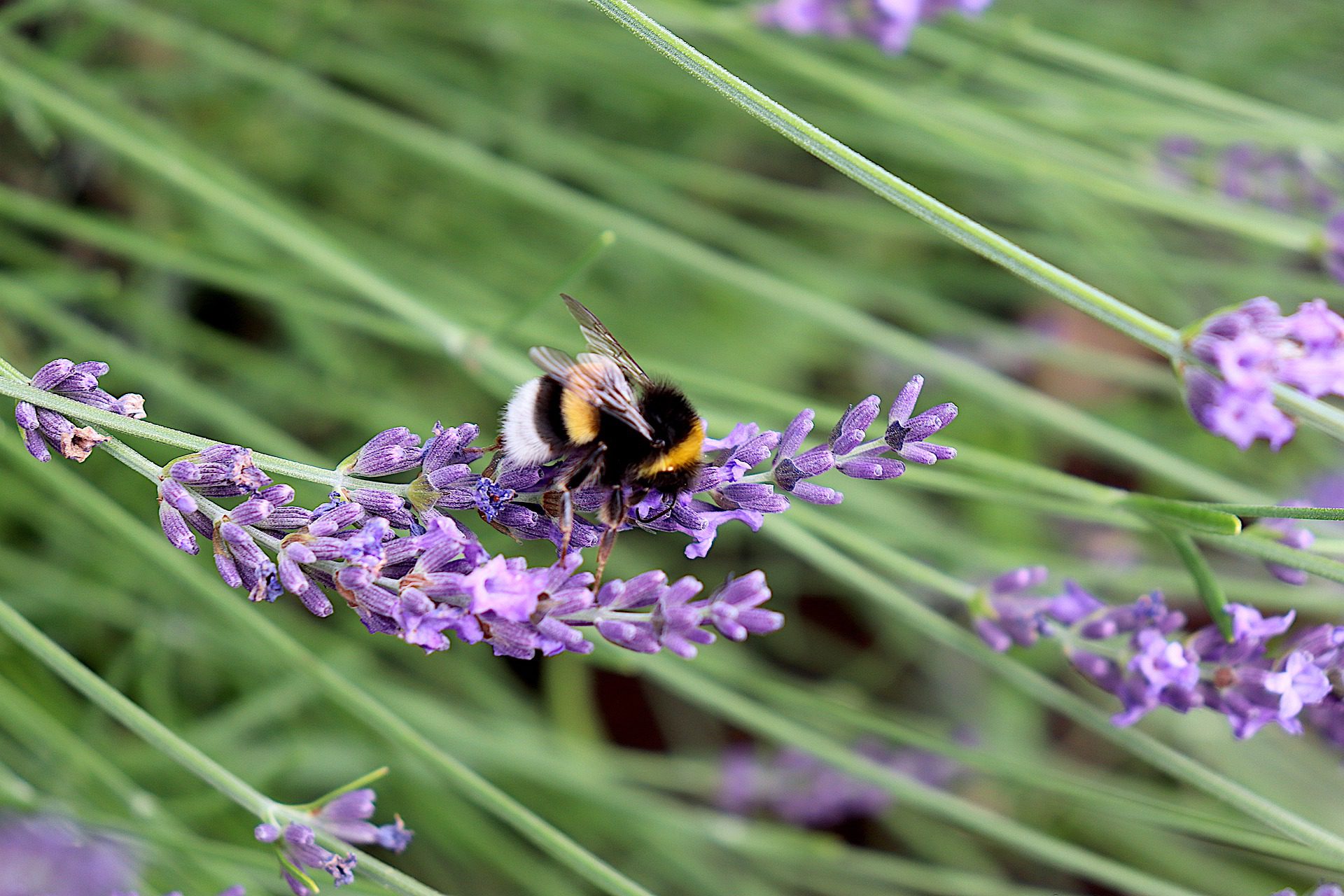
Bees will be out in full force in May. Enjoy spotting bumblebees, honeybees, and solitary bees in your garden – there are more than 250 different bee species in the UK!
How you can help:
- Have plants in your garden that offer spring nectar -e.g. Erysimum, Myositis (forget-me-nots), Muscari (grape hyacinths), Crocuses, and flowering fruit trees (apples, pears, cherry etc.).
- Put out homes for bees to nest in, such as bee boxes and bee bars. Make sure the nests are clean and securely in place.
Read more: The Best Plants for Bees / Guide to Solitary Bees
Birds
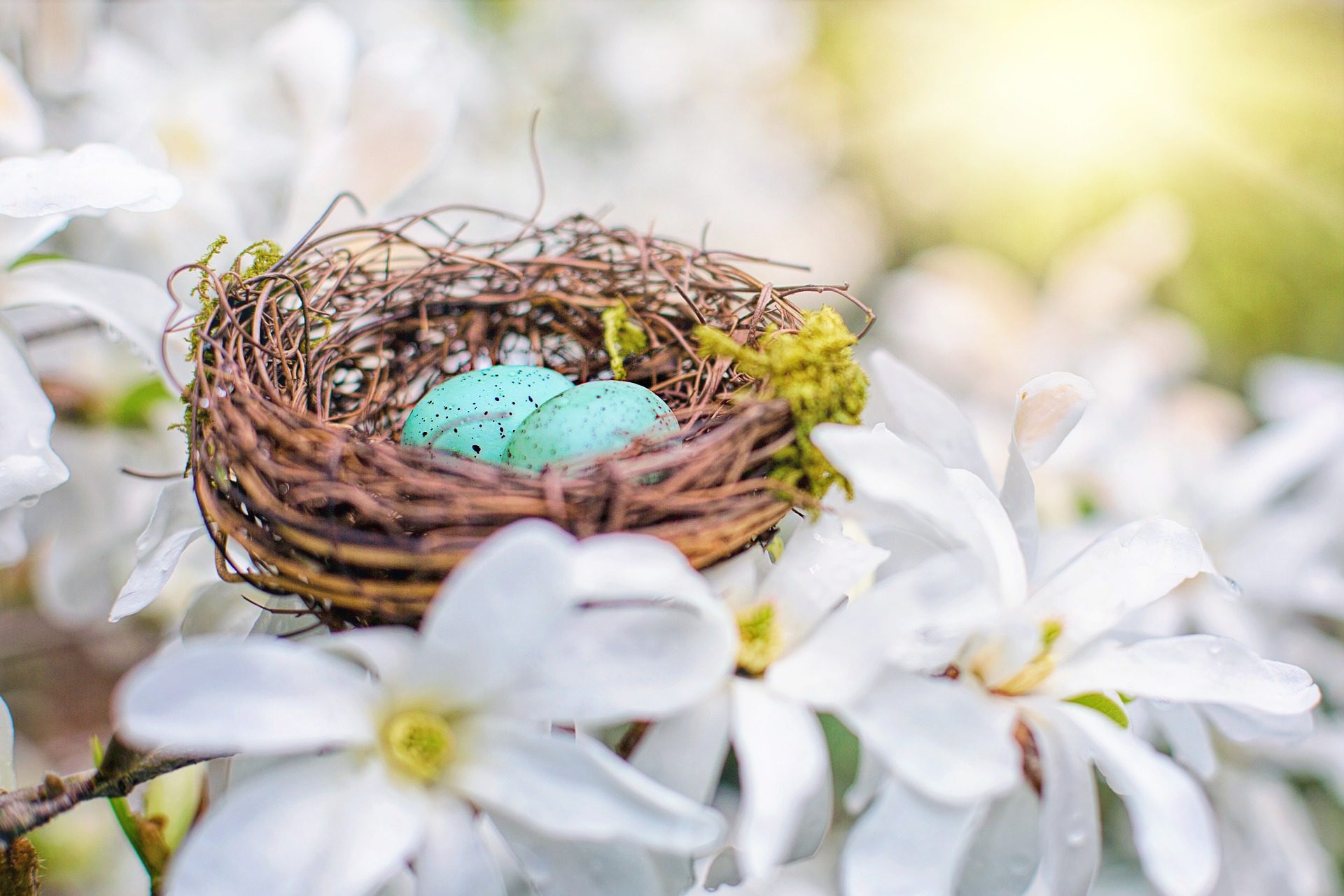
May is a key nesting month for many species of birds. You can continue to enjoy the joyful strains or birdsong all around when you stop and listen in the garden. Migrant birds that spend summers in the UK will continue to return this month, including swifts, swallows, spotted flycatchers, house martins, and cuckoos.
How you can help:
- Try not to disturb nesting birds. Avoid cutting hedges and large shrubs between March and August, so as not to disturb any nesting species. Wild bird nests are protected by law under the Wildlife and Countryside Act of 1981, although this tends not to apply to garden hedges.
- Offer high-protein bird food sources to support breeding species, such as sunflower seeds, mealworms, and calciworms.
Read more: Supporting Birds in Spring
Butterflies
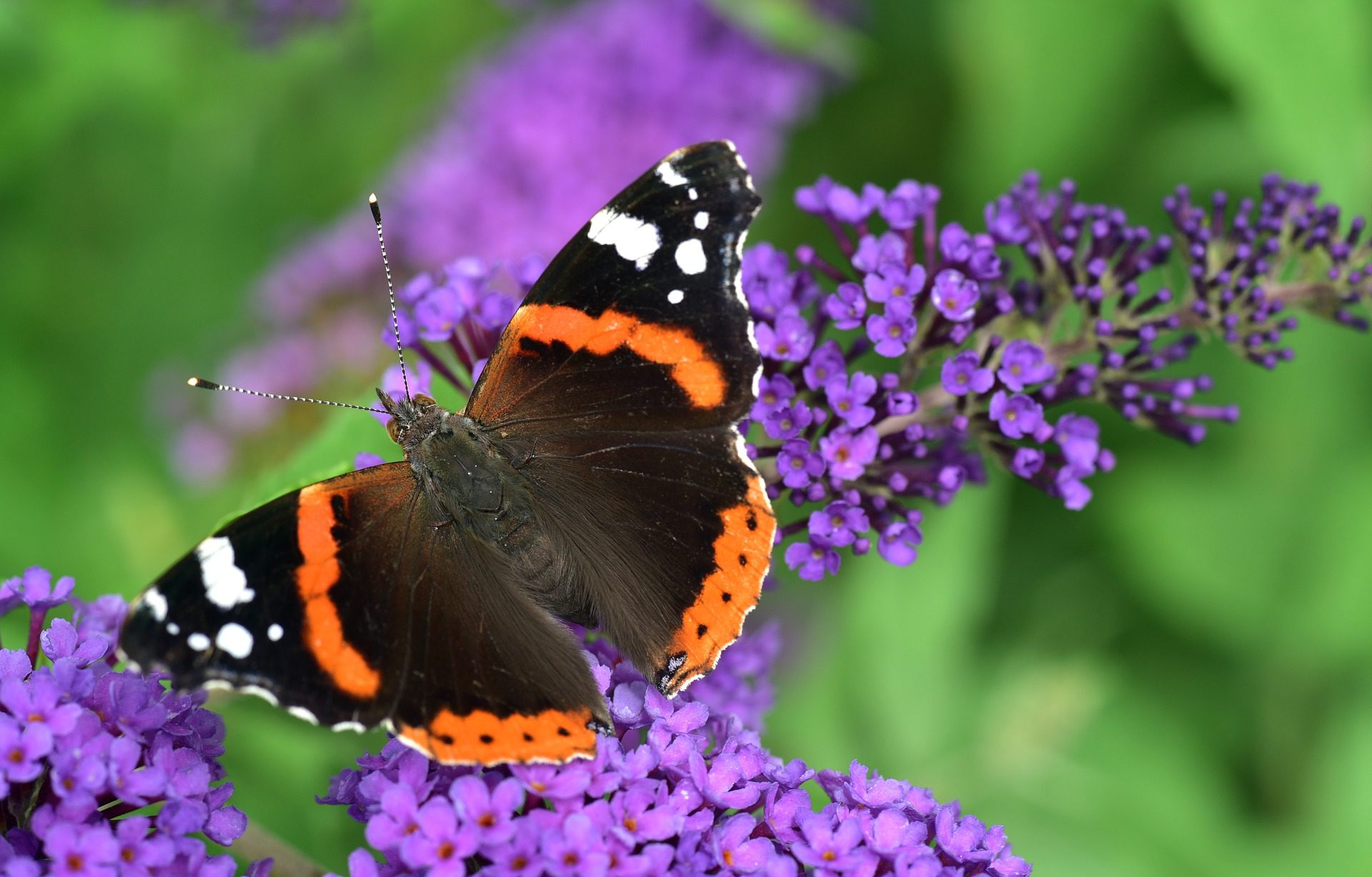
Butterflies continue to emerge in our gardens on warm days. By the end of May in a typical year, well over half of the species found in UK gardens will have been seen.
How you can help:
- Grow plants for late spring nectar. Good options include Primula vulgaris, Erysimum (wallflowers), aubretia, English bluebells, and Syringa vulgaris (common lilac).
- Position these in a sunny, sheltered spot where butterflies can easily land.
- Leave dandelions growing in your lawn – they are a valuable source of nectar.
Dormice
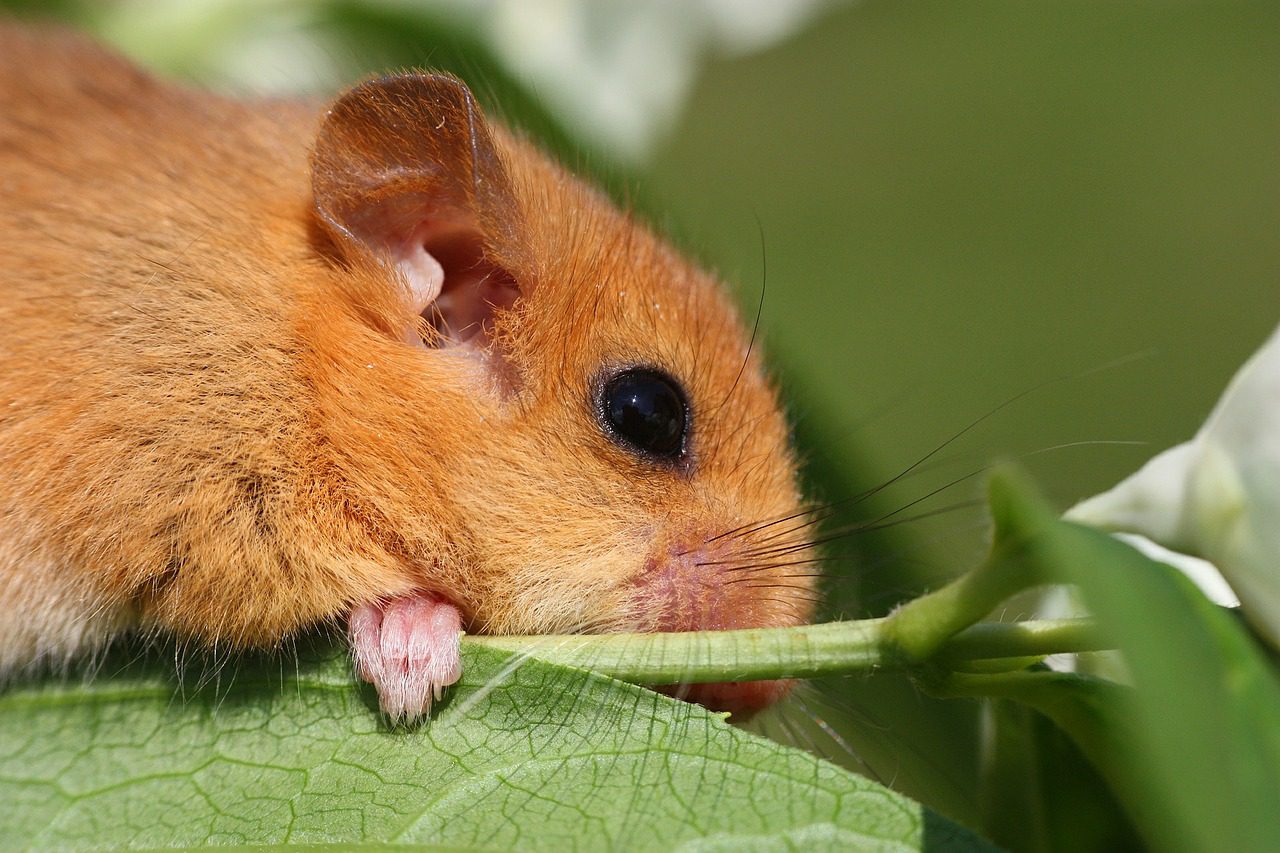
Dormice are long sleepers. Depending on the weather, they will tend to come out of hibernation in April or May. They are immediately very active, looking to put lost winter weight back on by feasting on buds, flowers and insects. They move quickly to find a mate. While first litters can arrive in late May or June, it’s more likely they will be born later in the summer.
How you can help:
- Put up a dormouse nesting box, if you have a suitable tree. If you are lucky enough to see one, please not try to touch it – they are legally protected.
Dragonflies
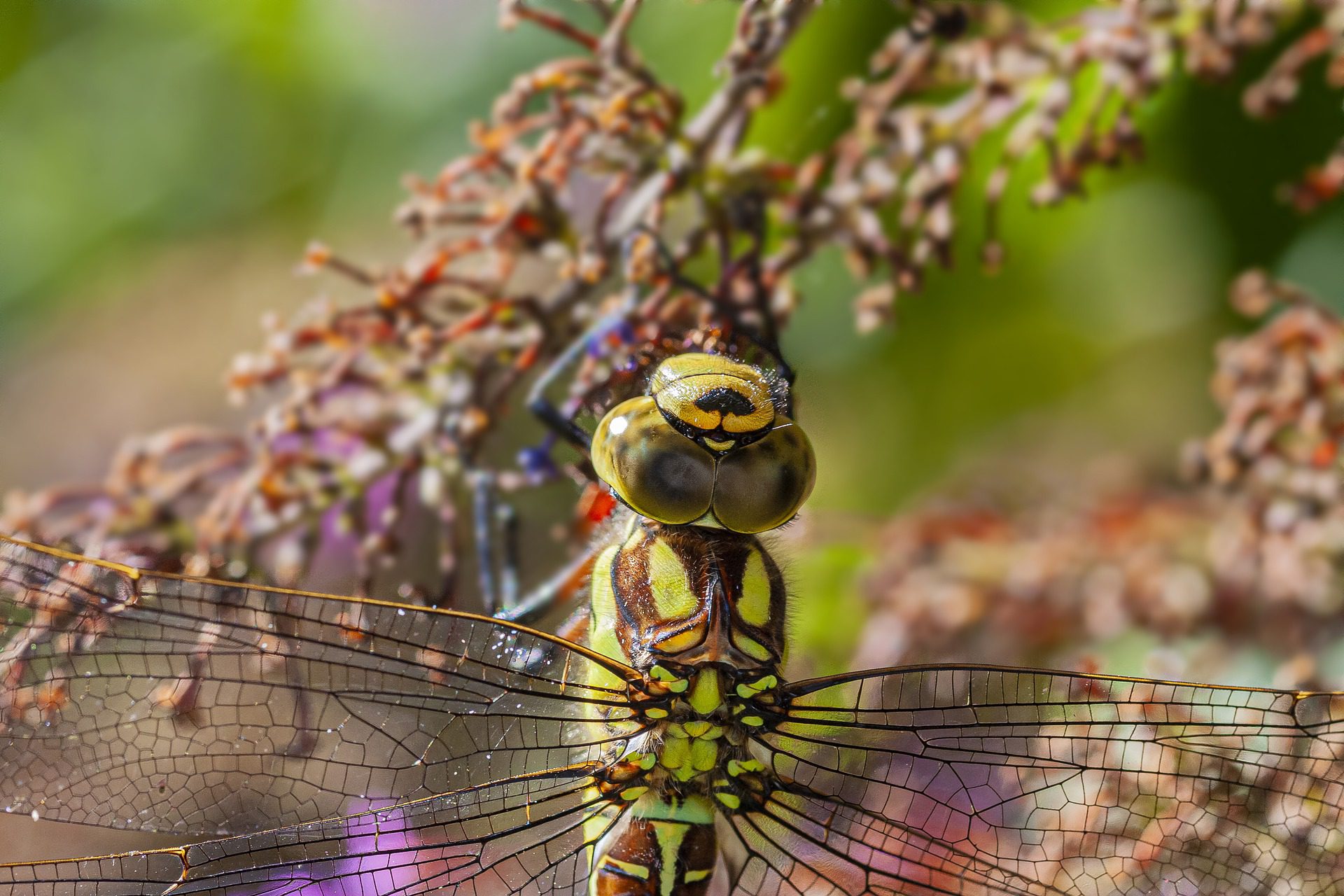
Adult dragonflies, in their flying form, have short life spans – somewhere between a few weeks and months. But their total lifecycle is much longer as they can spend several months, or years in some cases, as larvae living and feeding in the water. As they grow dragonfly larvae ‘moult’ repeatedly. On the final moult they arise from the water, their skin splits and their wings are released. You might start seeing them emerge this month.
How you can help:
- Wildlife ponds in the garden are a fantastic way to support a wide variety of creatures, including dragonflies and damselflies.
Hedgehogs
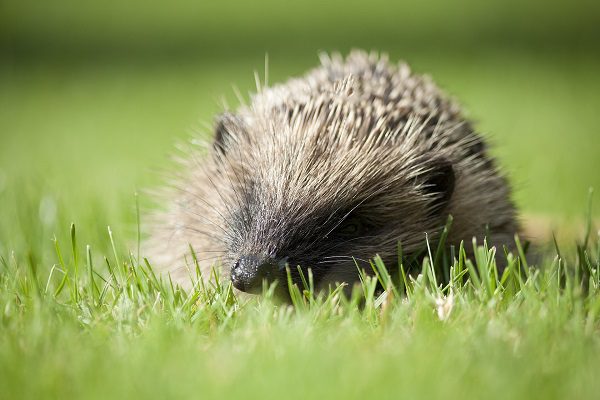
May is the heart of hedgehog breeding season, also known as ‘the rut’. The efforts by male hedgehogs to entice females includes circling them and producing some very loud snorting noises!
How can you help:
- This is a vital time to leave a source of food and clean water. You can get specially designed hedgehog foods that are high protein. Alternatively, cat food is fine but opt for chicken-based kibble.
- Create wild areas in the garden with longer grass, log piles etc. You could also purchase a hedgehog house, as a place to raise young.
- Hedgehogs can travel a mile a night to feed and find mating partners. One of the most important things you can do is allow free access between neighbouring gardens, creating ‘hedgehog highways’. This could be as simple as a small hole at ground level between fences – you can also purchase a special hedgehog crossing if you would like to make a feature of it.
Read more: How to Create a Hedgehog Friendly Garden
Ladybirds
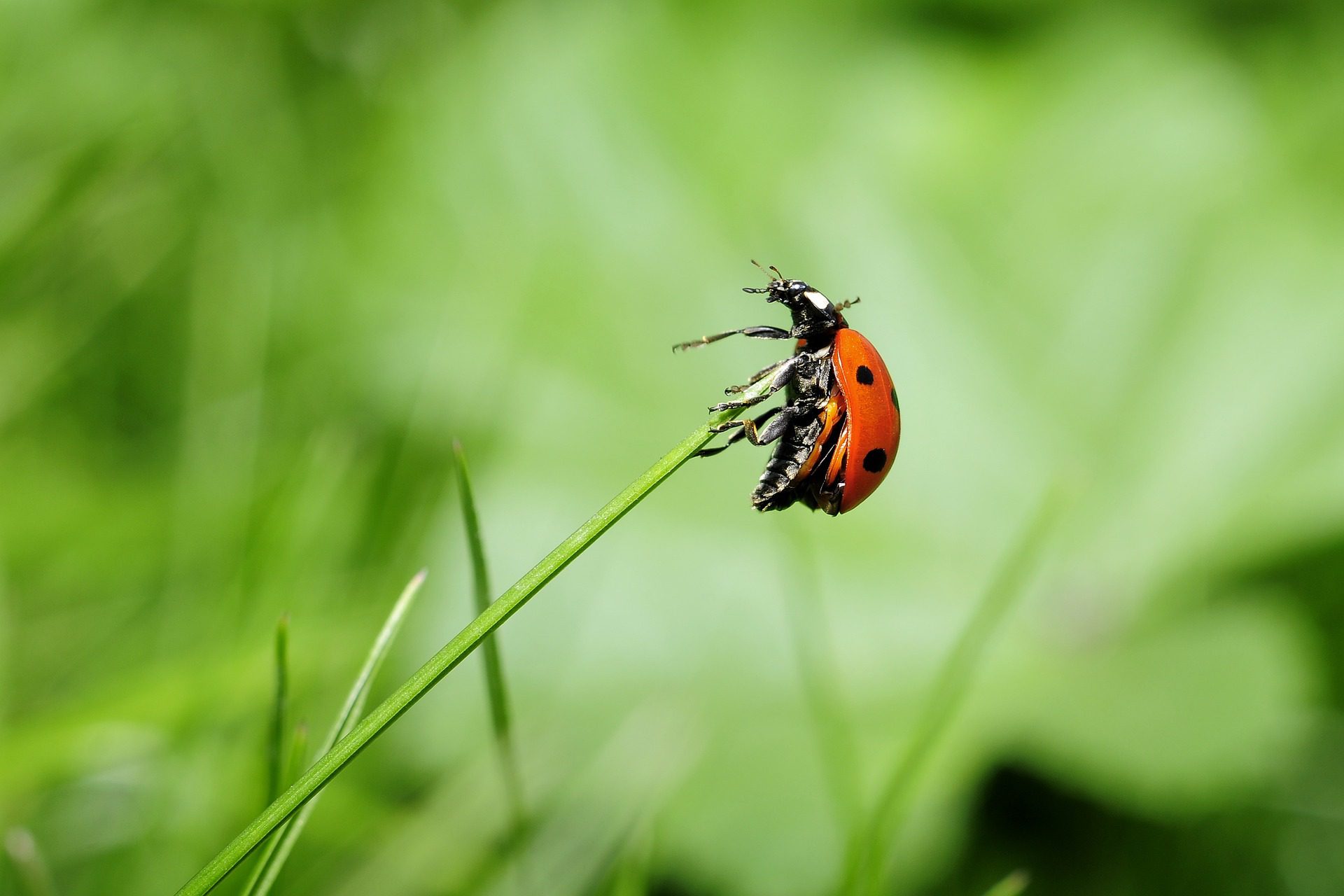
May tends to be the main breeding month for ladybirds. A female ladybird can lay many hundreds of eggs on plants over the course of the summer.
How can you help:
- Ladybirds feed on small insects and aphids. A garden supporting a complete ecosystem will naturally attract more ladybirds.
- Put out ladybird towers so they have a safe place to conceal themselves.
Mayflies
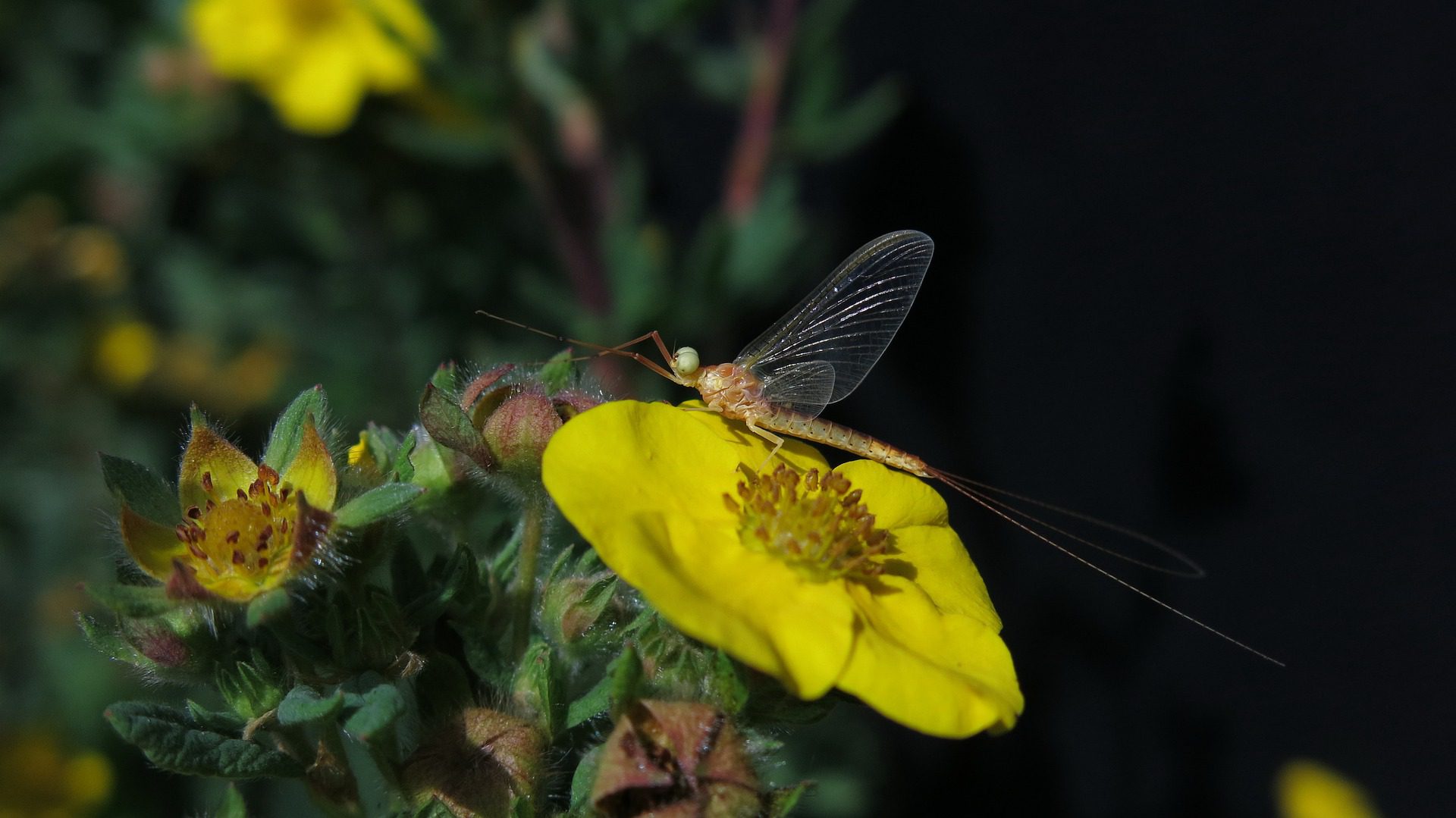
True to their name, mayflies can emerge in great numbers this month. There are more than 50 different species of mayfly in the UK. Look out for their cases on or around the water. Their adult life is extremely short-lived, although they do spend more time in their larval form.
How you can help:
- Mayflies are typically found around lakes and rivers, but some species will breed in ponds. Once again, a garden is a haven for many creatures.
May Dates for Your Diary
Hedgehog Awareness Week | 5th – 11th May
The annual Hedgehog Awareness Week, from the British Hedgehog Preservation Society, highlights some of the challenges faced by UK hedgehog populations and how we can help them in our gardens.
https://www.britishhedgehogs.org.uk/
National Children’s Gardening Week | 25th May – 2nd June
National Children’s Gardening Week takes place at the end of May each year, hoping to capitalise on sunny days to get little green fingers out into the garden. It is intended to bring the joy of gardening to children with a host of quick and simple activities to try, from fairy house flowerpots to hedgehog feeding stations.
https://www.childrensgardeningweek.co.uk/
Was This Article Helpful?
Join the Hillier Gardening Club to get the latest gardening news and advice
Find Out More

